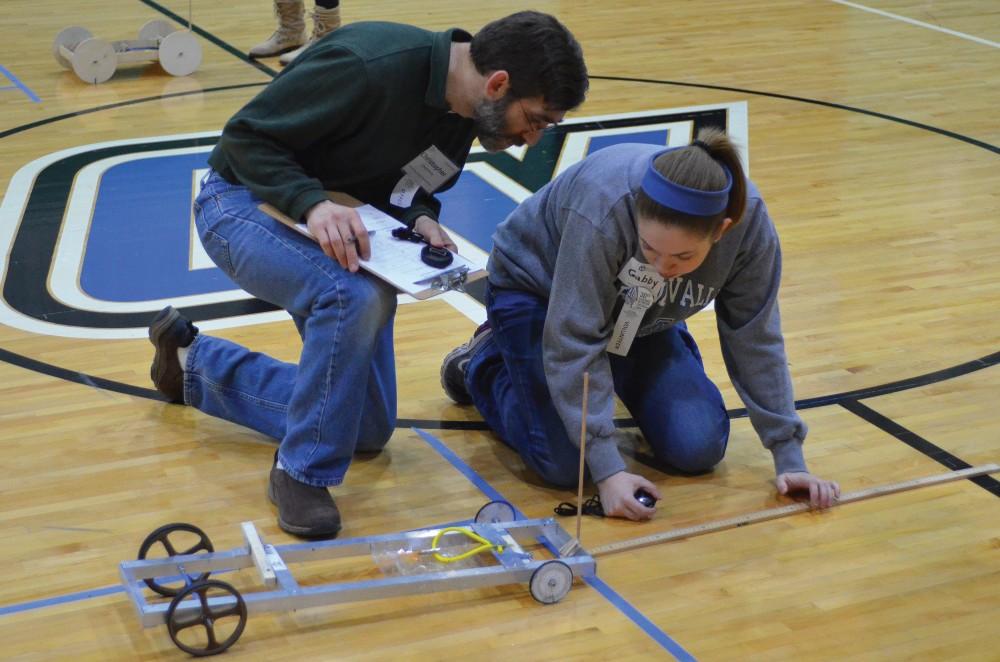Science Olympiad celebrates 30th anniversary at GVSU

GVL / Nate Kalinowski Professor Christopher Lawrence and Freshmen Gabrielle Gomez measure to see how well at team did in the wheeled vehicle event.
Mar 30, 2014
For 30 years, Grand Valley State University has helped shape young scientific minds. On Saturday, students from 42 middle schools and 24 high schools competed in the 30th anniversary celebration of the Science Olympiad. The event spanned 46 events and included scientific disciplines such as chemistry, physics, geology, health science and engineering.
“We have a lot of critical thinking skills incorporated into events,” said Margo Dill, the director of the event. “It ties into this year’s theme: bridge to the future. Students can use the Science Olympiad to help them decide what scientific fields they are interested in and start to plan for their futures.”
In keeping with the spirit of the scientific method, every event is team based. Participants prepared for months for the opportunity to show off their science skills.
Students Chad Longstreet and Emily Rose competed in the Boomilever event. Their objective was to create a wooden device designed to hold mass as efficiently as possible. Their Boomilever took two hours to build, and Longstreet said a lot of trial and error went into choosing what materials and design worked best. They were pleased with their score of 203 points.
“It’s the best score we ever had,” Rose said.
At the Rotor Egg Drop event, Maddy Revere and her team from Lowell Middle School held their breath as they dropped their egg to the floor below.
They made several prototypes before finally deciding on a design made of foam balls, twine and balsa wood. The group lit up with excitement when they found their egg safe and intact at the bottom. The team before them hadn’t been so lucky.
In the Scrambler event, participants were tasked with creating and powering a vehicle that accelerates toward a wall as fast as possible. The closer the car stops to the wall, the better.
CJ Shearer and Alex Ruiter powered their vehicle with a weighted coffee can hooked to a pulley system to transfer energy. The boy’s car didn’t quite make it to the finish line, but they weren’t discouraged.
“We had some problems today, didn’t quite get there,” Shearer said.
They said they would keep working at it and come back next year with an even better design.
That is what it’s all about, according to GVSU physics professor Bradley Ambrose, who has been involved with the olympiad for 14 years.
“The spirit of competition is there, but it’s not the only thing,” Ambrose said, adding that the events are designed to show what science is and that the students learn a lot about teamwork.
“It’s a way for them to not just learn about science, but they get excited and go more in depth in a certain area or scientific skill,” he said.
Ambrose applauded the schools and coaches that show strong dedication to their children’s scientific growth and said the results really shine through as he sees the competition getting better each year.
Students who performed exceptionally well at the olympiad earned the chance to compete at the state and national levels.
“Our region has done exceptionally well and has been represented at nationals in first, second or third place in 19 of the last 30 years,” Dill said.

























